► Toyota Supra from the beginning
► History of now-iconic sports car
► Which one would you own?
Toyota’s legendary Supra badge is back for 2019, but do you know where it came from or where it went?
A40-A50 Celica Supra, 1978-1981
The first Supra arrives in Japanese showrooms! Only it’s not called the Supra, it’s called the Celica XX because it’s based on Toyota’s four-cylinder Celica coupe, but with extra front-end sheetmetal to make room for a straight six.
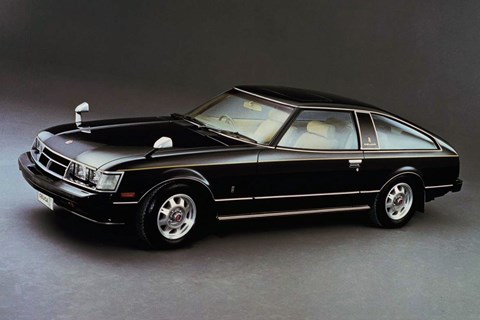
By 1979 it’s on sale in the rest of the world, now with a Celica Supra badge. Under the bonnet there’s a 2.6-litre six with 110bhp. Zero to 60mph takes over 10sec. Not fast or furious. A stretch to 2.8 litres for 1980 adds 6bhp.
A60 Celica Supra, 1982-1985
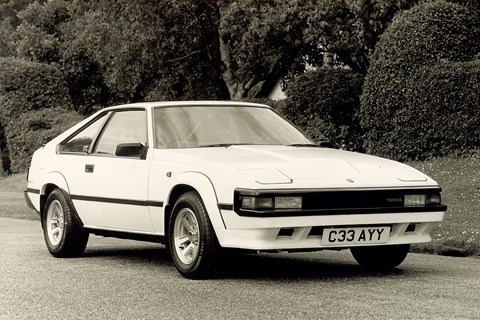
A new Celica means there’s a new Supra, again riding on a longer platform stretched to accommodate a straight six and sporting that 1980s essential, pop-up lights. UK cars get a 168bhp 12v 2.8 and a choice of manual or auto transmissions. Zero to 60mph takes 8.7sec.
For ’84, Brits enjoy Lotus-tuned handling and a new digital dashboard to display those improvements in cornering speed. Supra Mk2 is still more GT than sports car but Per Eklund captures the British Rally Championship title in his Group A racer and there’s a smattering of success in Africa on the WRC calendar.
A70 Supra, 1986-1993
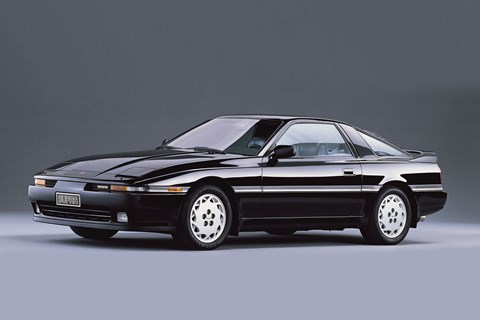
The Celica switches to front-wheel drive in ’85 so for ’86 the Supra switches to the Toyota Soarer platform to keep its rear-drive layout – and ditches the Celica prefix to become simply ‘Supra’.
European cars get a choice of coupe or Targa bodies and a naturally aspirated 7M-GE 3.0 24v straight six developing 200bhp that can push it to 60mph in 7.9sec. Clever tech includes optional adaptive dampers attached to the aluminium all-round double wishbone suspension.
A year later Toyota launches a companion model, the Supra Turbo, though Brits have to wait until 1989 to get their hands on one. Peak power (230bhp) isn’t much increased over the atmo car by the addition of a turbocharger, but it’s now genuinely quick: 0-60mph takes 6.1sec.
Quicker still – but not available in Europe – is the homologation special TurboA and Twin Turbo R. Fitted with a 2.5 1JZ-GTE (forerunner to the legendary 2JZ) the Twin TurboR delivers 280bhp to the road through a Torsen LSD.
Motorsport success for the Mk3 is rare though, a highlight being first place in the ’89 Australian Production Car Championship.
A80 Supra, 1993-2002
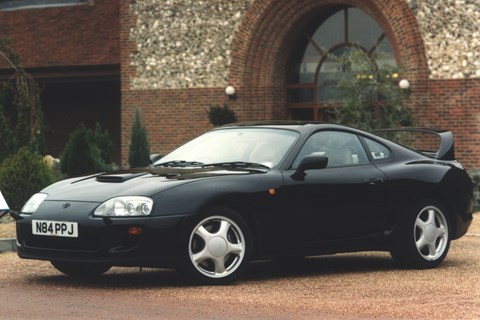
The Supra got serious for ’93, finally shaking off its GT image to become a proper Samurai supercar. Unlike rival Nissan’s R32 GT-R, the Supra again sticks with rear-drive but there’s slippery new styling that borrows from Toyota’s classic 2000GT, extensive use of aluminium to cut weight, a giant wing on the rear end and a first appearance for the legendary 2JZ motor under the bonnet.
Standard Mk4s get an un-blown 3.0 six making 220bhp, but Turbo models (the only cars offered in the UK and recognisable by a vented bonnet) pump out a huge 320bhp in European trim. Working sequentially, rather than in parallel as on the old Twin Turbo R, the two blowers help make the hottest Supra a 4.6sec 0-60mph weapon.
UK sales end in 1996, and by ’98 the US has denied it a visa, too. But it lives on in Japan until 2002 and in popular culture for years after thanks to appearances in the Fast and the Furious and the Gran Turismo and Need for Speed console games.
On real tracks the fourth-gen Supra finishes 14th at Le Mans and scores multiple JGTC (Japan Grand Touring Car Championship) driver and manufacturer wins between ’97 and ’05.
A90 Supra, 2019-onwards
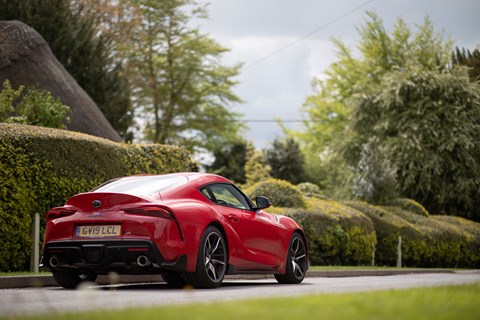
After a 17-year layoff the Supra is back, this time with only two seats. Partnered with BMW’s new Z4 roadster, it uses the German’s platform and running gear, but clothed in a muscular fastback body that’s a toned-down version of 2014’s scoop-heavy FT-1 concept. It’s longer, lower and wider than Toyota’s own GT86, but sits on a shorter wheelbase that makes it perfect for those touge runs.
UK and US cars get BMW’s 3.0-litre turbocharged straight six and mandatory eight-speed ZF auto ‘box. Good for 0-62mph in 4.3sec, the 3.0-litre Mk5 is the fastest factory Supra yet.
There’s more choice in Japan, at least if you want to go slowly. The JDM line up includes two 2.0-litre BMW four-pots that weigh up to 110kg less than the top-spec straight six: a 194bhp version capable of 62mph in 6.5sec and a 254bhp version that’ll get there in 5.2 seconds.
Check out our Toyota reviews